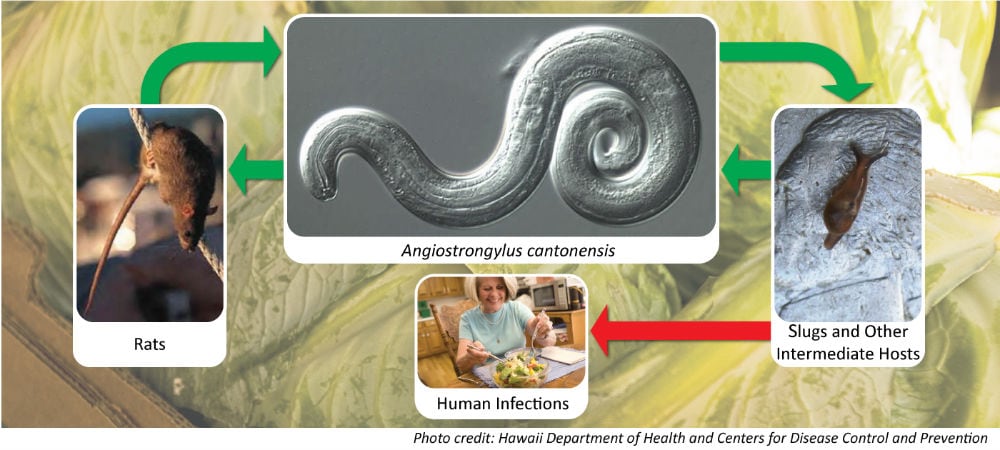The parasite—rat lungworm—is mostly commonly found in rats and snails, but once it infects you, it can cause spinal cord and brain dysfunctions like meningitis. In its most severe cases, rat lungworm can put you in a coma or cause death. Other symptoms include:
- blindness
- headaches
- sensitivity to light
- and vertigo
Rat lungworm, known in the scientific world as Angiostrongylus cantonensis, is not native to the continental United States. Cases of the parasite have been found in south Florida in the past, but researchers recently found it in parts of north and central Florida, too. Rat lungworm thrives in tropical areas like Hawaii, where it’s most commonly found, and researchers credit the spread of the infection to climate change.
“The ability for this historically subtropical nematode to thrive in a more temperate climate is alarming,” a researcher said.
“We expected the range of this nematode to be restricted to one part of the state because it’s primarily a tropical species,” said John Slapcinsky, a collections manager who worked on the study. “But being within another organism could mean it’s less impacted by cold weather.”
As weather collectively gets warmer around the country, rat lungworm can survive in a greater area, which increases the risk of infections in more parts of the United States.
In the study of 18 counties across north and central Florida, researchers found the parasite in nearly 23 percent of rats, including 16 percent of rat feces that were sampled and 2 percent of snails. Samples of rat lungworm were found in five counties:
- Alachua
- Leon
- St. Johns
- Orange
- Hillsborough
Other counties in the study range as far west as Okaloosa and as far south as Miami-Dade.
“The parasite is here in Florida and is something that needs to be taken seriously,” said Heather Stockdale Walden, an assistant professor at the University of Florida’s College of Veterinary Medicine who led the study. “The reality is that it is probably in more counties than we found it in, and it is also probably more prevalent in the southeastern U.S. than we think.”
“The ability for this historically subtropical nematode to thrive in a more temperate climate is alarming,” Stockdale Walden added.


